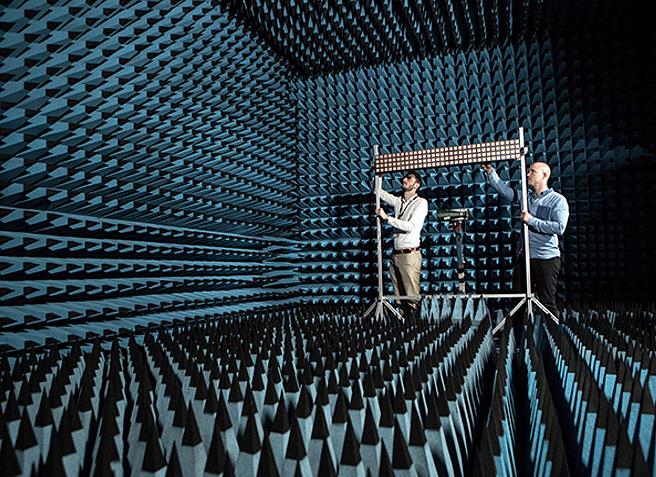And NI says recent updates to its products have enhanced their ability to use data. TestStand 2016 has a native data type which can be used to pass data to and from enumerations defined in code modules; CompactRio 2016 offers a InsightCM Enterprise tool to acquire, analyse and visualise data for an in-depth view of assets; the second generation Vector Signal Transceiver has a wider bandwidth, which allows it to achieve higher peak data rates; and, finally, improvements to Labview 2016 boost its ability to acquire and analyse measurement and signal data.
“Today, we have separate networks,” Van Hilten contended. “We have an IT network to connect people and data at home and at the office and we have an operational network (OT) to connect machines to factories. We need to converge our OT devices into our IT infrastructure.”
An important element in this, at least in NI’s eyes, will be synchronisation technology, or Time Sensitive Networking (TSN).
“The ability to transfer data and time deterministically over wire networks is going to be critical to highly distributed and industrial IoT systems of the future,” enthused Richard Roberts, staff marketing engineer.
Rahman Jamal, global technology and marketing director, believes TSN will be at the heart of industry 4.0. “TSN has the potential to replace all Ethernet terminals,” he stated. “It is particularly interesting in applications in smart grids or smart medicine, for example, where time is important for synchronising machines. What 5G is today for mobile communication, TSN will be for machine to machine communication.”
NI is working on a converged network technology based on TSN. Three key areas for improvement are: the mechanisation for the distributed time synchronisation; a traffic scheduler to provide latency guarantees; and system configuration.
NI claims it will release early access technology to support TSN, including specific software and a Cisco switch.
Discussing future technologies, principal product marketing manager Elijah Kerry, claimed:
“There are some new technologies on the horizon that will be highly disruptive. A lot of them revolve around increasingly distributed systems, remotely monitoring and controlling hardware or software assets, measurement systems and web interface.”
Meanwhile, Frazer Nash senior consultant Colin Freeman discussed Bombardier’s test facility, Train Zero, which uses model based design techniques to optimise capture and validation, design and verification testing for rail solutions.
“At various stages, we’ve enhanced what we can do by using modelling techniques,” explained Freeman. “It started with model-in-the-loop testing early on in the process all the way through to integrated hardware-in-the-loop testing.”
Bombardier used NI’s Veristand – which can compile a range of modelling languages – to model in Labview.
“There are more than 20 systems modelled on Train Zero,” Freeman said. “We weren’t able to apply the same approach to each system, so we drew a customer boundary around the CAPS [controller, actuators, plant and sensors] model in each simulation to provide the correct boundary to optimise the individual systems, but also to verify the train as a whole.”
Throughout the day, emphasis was placed on the importance of training future engineers, with particular reference to NI’s student design competition.
Example projects included the Stratos II rocket, built entirely by students, which broke a European record by reaching an altitude of 21.5km and the DTU Roadrunners eco-car which used an engine with a fuel consumption of 665km/l – the equivalent of driving the length of the UK on two litres of fuel.
Another winning project was a ‘breath-to-communication’ device, in which the user teaches the machine different breath patterns, which it translates into language. The young engineers had to program the machine for rapid code prototyping, simple GUI design and implementation, as well as the handling of large data sets.
Application of the Year The NI 2016 Application of the Year was presented to Steffen Malkowsky of Lund University and Paul Harris of the University of Bristol. The research team used NI’s prototyping platform to develop a real-time MIMO testbed with 128 antennas, generating 20MHz of spectrum within the 3.5GHz band to serve 12 client devices. The team also set a world record for a 22-fold increase in spectral efficiency over 4G networks. |













